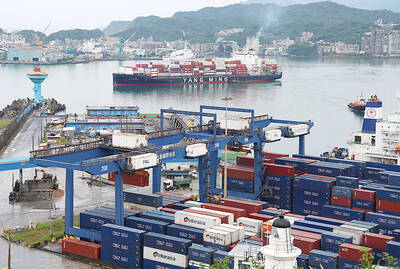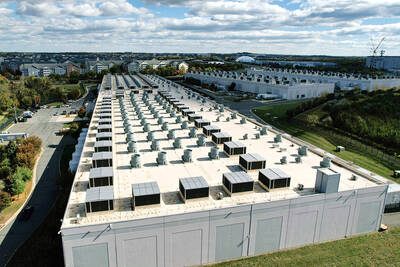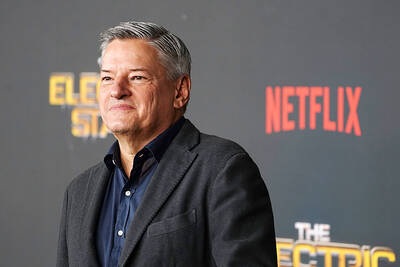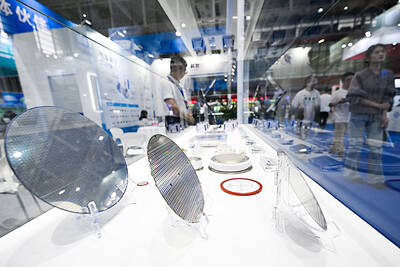Japan’s next government, which is likely to be led by Shinzo Abe as prime minister, has suggested it may join a US-backed Pacific-wide free-trade deal, a report said yesterday.
Tokyo has previously shown interest in joining the Trans-Pacific Partnership (TPP), but remained non-committal in the face of fierce opposition from its cosseted farming industry.
Participation by the world’s third-largest economy would give a shot in the arm to a pact seen as a key plank of US President Barack Obama’s “pivot to Asia,” and a counterbalance to China’s rising regional clout.
Referring to the possibility of joining the TPP, Abe’s Liberal Democratic Party (LDP) and its junior coalition partner, the New Komeito Party, “will pursue the best path that would serve Japan’s national interest,” they said in their final coalition agreement, the Asahi Shimbun reported.
The coalition, which is due to take office officially tomorrow, also agreed on promoting other free-trade frameworks, it said.
The comment contains a more positive note on participation in the TPP compared with the LDP and New Komeito Party’s election pledges before the Dec. 16 poll that brought Abe a landslide victory.
In an apparent move to garner farmers’ votes, the LDP had said during the election campaign it “opposes participation as long as joining the pact requires preconditions of abolishing tariffs without exception.”
The New Komeito Party had also taken a cautious stance on early participation in the trade pact.
The day after Abe’s poll victory, Japan’s major business lobby, Keidanren, urged Abe to join the trade talks “at an early date.”
“We urge the new government to participate in the negotiations of the TPP at an early date, as we have no time to waste on the issue,” Keidanren chairman Hiromasa Yonekura said in a statement.
Business lobbies say Japan’s export-oriented economy would be a major beneficiary of the promotion of a global multilateral free-trade system.
Separately, the yen dipped against the US dollar and the euro in Asian trade yesterday as Abe stepped up pressure on the Bank of Japan to set a 2 percent inflation target.
He told Fuji Television the bank’s policy board must back his proposed 2 percent inflation goal next month and warned failure to do so would mean he would amend the law that sets out its duties and guarantees its independence.
The market has welcomed his rhetoric, sending the yen lower and boosting the Nikkei index.
In Asian trade the euro bought ¥111.19, compared with ¥110.05 late on Friday in New York, while it was also at US$1.3178 from US$1.3181.
The US dollar fetched ¥84.35 up from ¥84.25.
“The yen is finding sellers, even in thin holiday trade,” said Jason Hughes, head of premium client management for IG Markets Singapore.
“The changes in political circles in Japan mean we will see a more aggressive stance in weakening [the yen],” he said.

Taiwan’s exports soared 56 percent year-on-year to an all-time high of US$64.05 billion last month, propelled by surging global demand for artificial intelligence (AI), high-performance computing and cloud service infrastructure, the Ministry of Finance said yesterday. Department of Statistics Director-General Beatrice Tsai (蔡美娜) called the figure an unexpected upside surprise, citing a wave of technology orders from overseas customers alongside the usual year-end shopping season for technology products. Growth is likely to remain strong this month, she said, projecting a 40 percent to 45 percent expansion on an annual basis. The outperformance could prompt the Directorate-General of Budget, Accounting and

The demise of the coal industry left the US’ Appalachian region in tatters, with lost jobs, spoiled water and countless kilometers of abandoned underground mines. Now entrepreneurs are eyeing the rural region with ambitious visions to rebuild its economy by converting old mines into solar power systems and data centers that could help fuel the increasing power demands of the artificial intelligence (AI) boom. One such project is underway by a non-profit team calling itself Energy DELTA (Discovery, Education, Learning and Technology Accelerator) Lab, which is looking to develop energy sources on about 26,305 hectares of old coal land in

Netflix on Friday faced fierce criticism over its blockbuster deal to acquire Warner Bros Discovery. The streaming giant is already viewed as a pariah in some Hollywood circles, largely due to its reluctance to release content in theaters and its disruption of traditional industry practices. As Netflix emerged as the likely winning bidder for Warner Bros — the studio behind Casablanca, the Harry Potter movies and Friends — Hollywood’s elite launched an aggressive campaign against the acquisition. Titanic director James Cameron called the buyout a “disaster,” while a group of prominent producers are lobbying US Congress to oppose the deal,

Two Chinese chipmakers are attracting strong retail investor demand, buoyed by industry peer Moore Threads Technology Co’s (摩爾線程) stellar debut. The retail portion of MetaX Integrated Circuits (Shanghai) Co’s (上海沐曦) upcoming initial public offering (IPO) was 2,986 times oversubscribed on Friday, according to a filing. Meanwhile, Beijing Onmicro Electronics Co (北京昂瑞微), which makes radio frequency chips, was 2,899 times oversubscribed on Friday, its filing showed. The bids coincided with Moore Threads’ trading debut, which surged 425 percent on Friday after raising 8 billion yuan (US$1.13 billion) on bets that the company could emerge as a viable local competitor to Nvidia